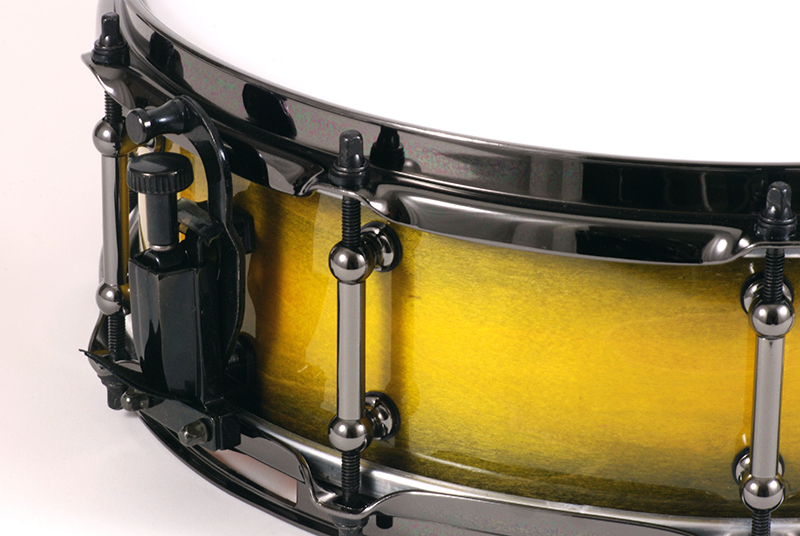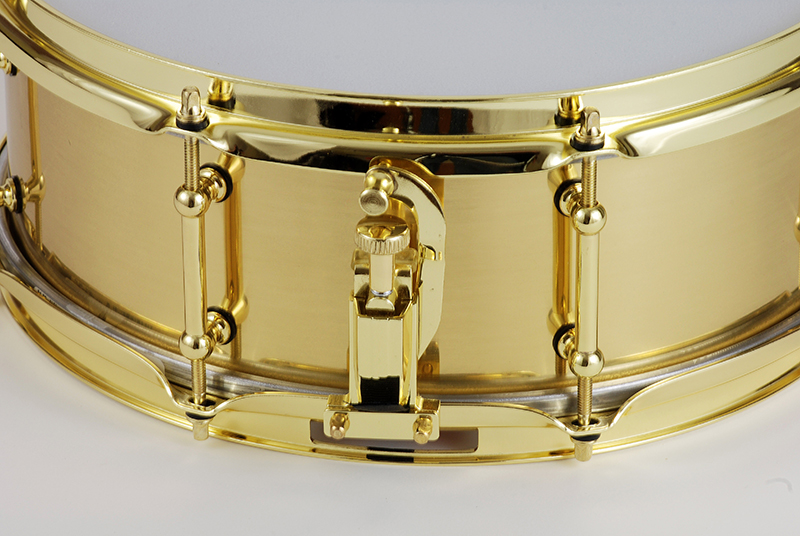One thing that’s common with today’s consumers is that when they want something, they want it now. I blame technology – buy an item on-line and it’ll usually be pulled from stock, packaged up, and started in the shipping process within hours. That new norm has changed our expectations enormously.
The same thing holds true when you’re buying drums. Buy from a brick-and-mortar store and you take them home with you. Buy on-line and you have them within a few days. If they’re not in stock, the retailer can usually special order from the manufacturer and get them to you in a few days or a few weeks.
But order something from a custom builder and it can seem like someone slams on the brakes. Suddenly you’re talking about anywhere from several weeks to several months, and you feel like the kid in the back seat of the car – are we there yet, are we there yet?
Frustrating, for sure. But knowing what to expect and how to participate in the process can help a lot.
Understand that drum building is not an industry of enormous factories and many thousands of workers. It’s mostly a community of very small shops and tiny staffs. Even many of the well-known builders are much smaller operations than you’d think. That means that if someone’s out sick or there’s a personnel change, it can affect the production schedule. Major weather problems can affect the production schedule. Specialized tools and their maintenance can affect the production schedule. Material shortages or subcontractor delays can affect the production schedule.
So, really, why does it take so long? Most of those how-it’s-done videos seem to have the drum finished in a matter of hours, if not minutes. Maybe, you wonder, the builder isn’t organized, or doesn’t want to work hard, or isn’t a stable business, or just doesn’t care. But, overall, the reality is that the custom build is a very different process from mass production.
Bear in mind that with mass production there are routine materials, sizes, components, and processes – a lot gets done with programmed machinery, templates, and assembly-line setups. But when you’re talking about custom, made-to-order work, it’s difficult to standardize production because of the frequent need to modify setups and processes.
For example, mass production of wood shells usually involves only a few species to choose from. But if you decide you want something different, a custom builder is going to have to source raw materials especially for your order. Specific dimensional requirements (and appearance, for anything that’s not covered by wrap, paint, or veneer) mean it’s not just a matter of popping out to the nearest home improvement center.
And actually making a shell can be a long process as well. If you want something that’s bent, glued, or molded, the material has to be shaped, sized, and fine-tuned to be within specifications. If it’s solid wood, it may need to stabilize for days at a time, or have moisture content slowly altered at certain stages. Occasionally, there can even be a failure – imperfections or weak spots inside the material that didn’t show on the outside, stresses during the process that damage the material, or sections that aren’t stable until fully assembled.
Your order might require special wraps, designs, artwork, etc., that can take time – sometimes a little, sometimes a lot – or specialized hardware that has to be fabricated. Even with mass-produced, relatively standard parts there’s always the possibility of a back order or limited availability. And pulling together all the materials and components for your project could involve a fair amount of shipping time in addition to fabrication time.
Then you may want special fittings, such as reinforcement rings, inlays, decorations, and so forth. Some of these take only an hour or so to install, others can take days to complete. And any custom parts usually mean there’s custom layout and drilling involved as well. Simple wraps can be installed quickly, but some finishes involve mixed materials, custom-blended tints, multiple applications, or lengthy curing times.
So it’s sounding like there are no reasonable limits on how long a custom order can take, right? Well, there are a few things you can do to help this process along and make it more comfortable and enjoyable for you. After all, it’s not just the builder’s project; it’s yours, too.
- You probably asked at the beginning for a rough estimate of how long an order would take. But once all of the final specs are agreed on, ask whether anything has altered that projection.
- If the adjusted timeline sounds longer than you’re comfortable with, check to see if any changes in the design might speed up the process.
- Once things are underway, don’t hesitate to ask for updates on progress (within reason, of course). Sometimes a normally slight delay turns out to be longer than expected, and you’re entitled to know what’s going on. If there’s a roadblock, the builder should be willing to tell you what it is and what solutions he’s pursuing. (And, yes, there are such things as unreasonable or avoidable delays that you shouldn’t have to accept.)
- Lastly, do your part to keep things in motion: respond to questions, raise concerns, don’t keep rethinking your plan once it’s underway, ask for information when you need it. A custom drum project should be a collaborative partnership between artist and artisan – and that’s an approach that can give you a great experience as well as a fine instrument.














